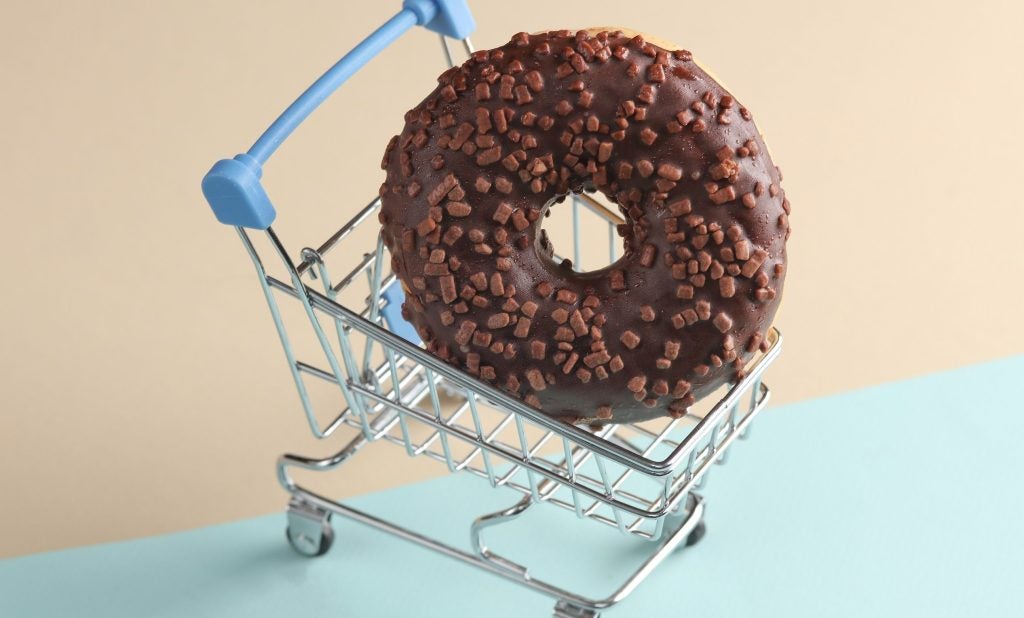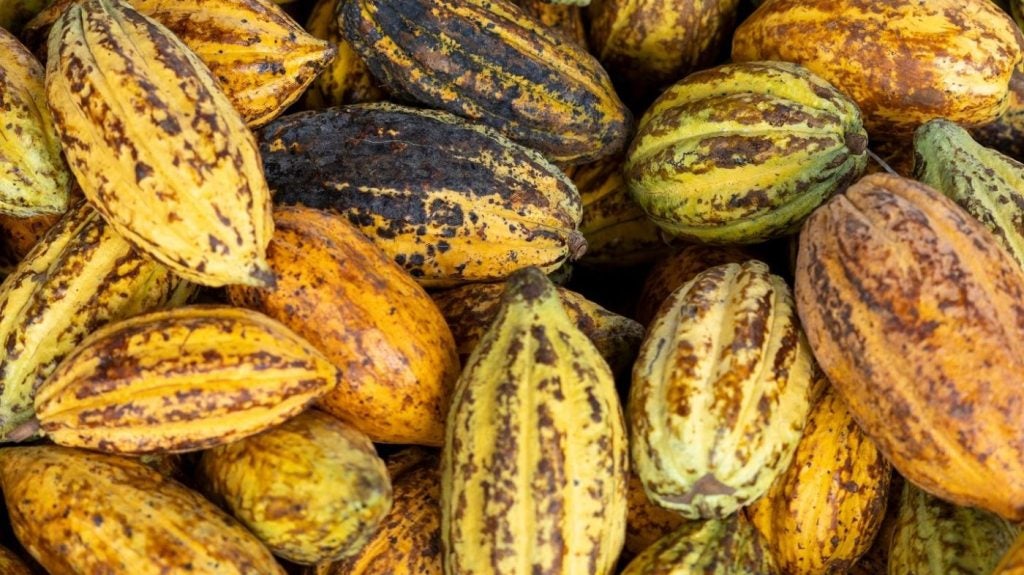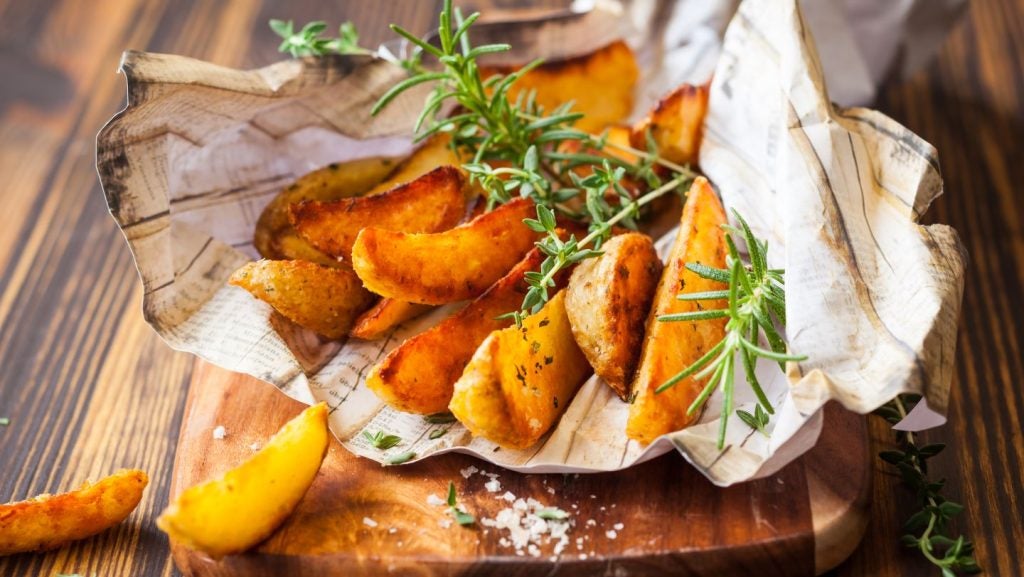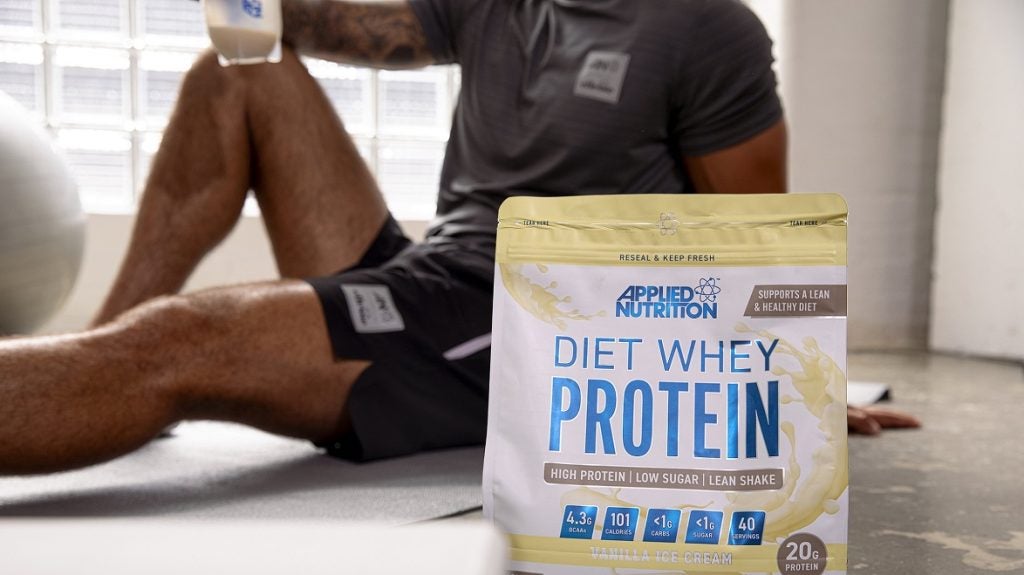In an interview with Just Food in November, René Lammers, the chief science officer at PepsiCo, said the US food and beverage giant wanted to be “seen as a catalyst” for improved public health.
Eyebrows might have been raised at such a statement from a multinational business that’s made its fortune from sugary drinks and salty snacks but it suggests the world’s largest purveyors of foods high in fat, salt or sugar are reassessing (at least in some ways) their role in the marketplace.
Lammers said he was confident the Walkers and Doritos manufacturer’s sodium and diverse ingredients targets, could positively impact public health.
While the strategy was defined as a “strategic end-to-end transformation” campaign, it was arguably the part about improving the nutrition of its “convenient” foods by reducing the amount of saturated fats and sodium they contain that was the most interesting.
The factors at play
PepsiCo is not the only big food manufacturer to look at ways to make its portfolio healthier and, while it may be overly-cynical to entirely discount altruism on the part of the producers, there are other factors at play.
Firstly, there has been a general move towards health and wellness among consumers in recent years, which many observers have said was heightened by the Covid-19 epidemic.
Secondly, many countries are dealing with serious problems surrounding obesity in their populations, putting a strain on medical resources and the public purse.
And governments are increasingly turning to the regulation of unhealthier products containing foods high in fat, salt and sugar.
In 2016, Chile passed a new law that mandated the use of black, octagonal warning labels on products high in those three ingredients (and calories).
Four years later, lawmakers further north in Mexico announced similar rules, which contained their own plans for octagonal warning signs.
Latin America has been at the centre of such moves, with Argentina following suit in 2022 and Colombia, Peru and Uruguay also having the labels in place.
Another eye-catching piece of legislation has been in the UK and the country’s Soft Drinks Industry Levy, commonly referred to as the ‘sugar tax’, launched in 2018.
There were some in the UK who thought the focus may then turn to food but targets to cut salt and sugar remain voluntary and attempts to introduce some constraints on the marketing of indulgent items – such as restrictions on advertising or curtailing special offers – have been delayed.
Nevertheless, the more indulgent ends of the market remain in the sights of campaigners – and of some politicians.
Governments tackling ‘junk food’
Last month, Scotland’s devolved government unveiled plans to clamp down on unhealthy food and soft drinks.
Holyrood’s move followed a push by the also-devolved Welsh government, which announced plans to tackle the marketing of so-called junk food last summer.
Introducing the plan, Jenni Minto, Scotland’s government minister for public health and women’s health, said: “Promotions such as multi-buy offers or placement at checkouts can directly influence the choices we make – that is what they are designed to do. Evidence shows promotions are often applied to less healthy food and drinks.”
The proposal is to target promotions including multi-buys, temporary price reductions and meal deals, as well as restricting the positioning of such products at checkouts and front-of-store.
So perhaps manufacturers cutting down on less healthy ingredients in their products are jumping before they are pushed?
Weight-loss drugs
A third, and inter-linked, reason for a focus on the reformulation of indulgent products is the rise of GLP-1 weight-loss drugs.
GLP-1s, such as the semaglutide marketed under brand names including Novo Nordisk’s Ozempic and Eli Lilly’s Mounjaro, were initially developed to treat type 2 diabetes but, especially in the US, are increasingly being prescribed for weight loss. Their roll-out across the rest of the world is widely predicted.
An argument goes that rapid weight-loss could make consumers focus on their health more generally and inform their food choices, negatively impacting the sales of manufacturers of indulgent foods.
Interestingly, a month before Lammers’ interview with Just Food, his ultimate boss, PepsiCo CEO Ramon Laguarta, questioned how widely the drugs could be used and their likely impact.
Speaking to analysts following the group’s third-quarter results, he said: “Overall, if you take global consumption, there are obviously a lot of question marks with regards to the obesity drugs when it comes to medical testing or scalability of the usage of this, or what is the impact really on consumer choices.”
But, echoing Lammers’ comments on reformulation, he said: “Everything we’ve been doing for the last five, six years when it comes to reducing sodium, reducing fat, reducing sugar, reducing the portions of our products, adding some new cooking methods to our snacks, those are all very positive trends that will help us pivot the portfolio if needed in the future.”
Not all agree
However, it is true to say not all manufacturers of products many would see as unhealthy are buying into the idea they are supping in the last chance saloon.
In September, US food manufacturer JM Smucker struck a deal to acquire local sweet-snacks group Hostess Brands for around $5.6bn.
Smucker CEO Mark Smucker said buying Twinkies maker Hostess was “a compelling expansion of our family of brands” and “a unique opportunity to accelerate our focus on delighting consumers with convenient solutions across different meal and snacking occasions”.
We worry indulgent snacking saw outsized growth during the pandemic years as people turned to nostalgic foods
Alexia Howard, AllianceBernstein
Analysts were not so sure. AllianceBernstein’s Alexia Howard, who reports on the business for investors, said at the time: “We worry that indulgent snacking saw outsized growth during the pandemic years as people turned to nostalgic foods. And more recently, the outsized price growth has also buoyed the top line but this is likely to slow sharply in coming quarters.”
JM Smucker disagreed, saying it anticipated a $650m benefit to its top-line sales for its fiscal 2024 from the acquisition and pointing out that Hostess had grown 20% faster over the past three years than those companies marketed as healthy alternatives.
Reformulation fails
Manufacturers that take a different approach and try to make well-known products healthier have not always succeeded.
It can be difficult to reformulate chocolate bars, crisp varieties and cakes with no certainty consumers will accept the new version.
As Hannah Cleland, a research analyst at Just Food parent GlobalData, says: “Failure of products such as Coke Life and Cadbury Dairy Milk 30% Less Sugar indicate that consumers are uninterested in healthy reformulations of indulgence foods.”
Quoting a GlobalData consumer survey carried out in the first quarter of 2023, she adds: “In chocolate, confectionery, desserts, and the savoury snacks category 26% and 24% of consumers respectively are put off trying alternatives such as free-from, 'low/no', plant-based and lab-cultivated because they don’t think they will like the taste flavour. This was the number one reason given.”
In October, when Mondelez International – the owner of Cadbury chocolate and Oreo cookies – decided to ditch Cadbury Dairy Milk 30% Less Sugar after four years on the shelves, it blamed a drop-off in demand.
A boost for new players
Playing into the hands of new market entrants, it is often easier to introduce a new taste for consumers to accept rather than trying to alter the complexion of something they already like.
Cleland says: “There is demand for healthy alternatives but it is a case of introducing new types of product to the consumer rather than reformulating familiar favourites.”
Harry Thuillier, co-founder of UK-based healthier ice-cream business Oppo Brothers, is of the same view. “When we launched Oppo Ice Cream in the freezer aisle ten years ago, with our mission to create award-winning ice-cream but with a fraction of the calories, there were no others doing it and it was a challenge to educate shoppers that less sugar doesn't mean less taste.
“Since then, we’ve seen copycats following suit in order to meet HFSS guidelines but the junk-food juggernaut of big, packaged goods companies which are still reliant on HFSS foods for most of their sales is going to take a while to slow down and it can be a turn off for consumers to see brands 'watering down' versions of their full-fat treats to tick a box.
“I would say this but, at least in our space, the ‘pure play’, 100%-focused healthy indulgent brands are the ones that are succeeding.”
The growth of healthier ingredients
That many big food companies are trying to reformulate, though, is not in question. The evidence is there from the businesses that supply them.
“Stevia [a sugar replacement] has been growing at the healthiest rate among all major sweeteners in recent year, and we expect this growth to continue at an average 8-8.5% CAGR over the next four to five years,” Tom Fuzer, VP for market strategy at global ingredients supplier Howtian, says.
Fuzer says that while beverages remain the key segment for sugar replacement, and where the largest volume of stevia is used, Howtian has seen growing demand from the dairy sector over the last few years.
“[This is] particularly with yogurt, ice cream and flavoured milk applications, which is now a key focus for Howtian,” he says.
“Consumers are actively avoiding products with artificial ingredients and unnatural chemicals. Nowhere else is this demand more visible than in the world of sugar substitutes, where we see a significant departure from aspartame and saccharine towards natural alternatives. This demand has been a driver behind many innovations and reformulations in the food and beverage industry over 2022 and 2023.”
In terms of where demand is coming from, Fuzer says: “Geographically, there continues to be strong and healthy demand in North America. Interest is growing rapidly in Latin America, particularly Colombia, Brazil and Mexico, while India and Indonesia are some of the most promising markets in Asia.”
GLP-1 medicine and diet choices
The question of whether the growth in the usage of GLP-1 weight-loss drugs will turbo-charge both consumer reluctance to buy less healthy products and manufacturers’ attempt to make products healthier is open to debate.
Veteran food industry analyst Clive Black, a director at UK investment company Shore Capital, says: “We are still in the foothills of GLP-1 but it is having an impact.
“The likes of PepsiCo, Mondelez, Kellogg and General Mills absolutely have to have an eye on the growth of GLP-1.
“But it is medicine and the behaviour around that is very important. Will people change their diet as well as taking their tablets?”
Cleland at GlobalData suggests “the rise in weight-loss drugs indicates how far consumers still have to go in terms of improving diet in a sustainable, long-term way”.
The future of indulgence
No one is expecting to see chocolate bars, crisps and cakes in their original composition disappearing from our shelves anytime soon.
Black says: “Does the indulgence market have a future? Absolutely. The most important thing is still taste. Chocolate is a good example. In terms of consumption per head we are eating more than we ever have.”
And even executives from manufacturers of healthier products are careful not to predict the demise of indulgent rivals.
Brigette Wolf, chief marketing officer of the US low-calorie ice-cream business My/Mochi, says: “I still think human beings are going to want the joy in their life in eating. I think we need to manage how much we put in on certain things and where balance is but I don’t think it’s either-or.”
Wolf, a former Mondelez executive, is convinced, though, that taste and better-for-you credentials can be satisfied within one product.
“My hunch is that since the invention of honey and even chocolate, if you go back to the Mayans, humans light up with sweets, right? And there is a joy in that and there's an emotional connection there that we should be able to do. Now, [it’s about] how do we do that in controlled ways in moderation?”
Thuillier at Oppo Brothers, agrees. He says: “People are always going to seek sweet indulgences but, as we all wake up to the role sugar is playing in obesity and disease, anyone with even a faint interest in good health is interested in ways to reduce it. It's rightly prompting manufacturers to see what can be done to reduce less healthy ingredients while maintaining taste.
“As consumers increasingly realise that ladles of sugar aren't strictly necessary for indulgence, the writing’s on the wall for those who don’t create and grow brands that speak to both taste and health.”
Fuzer at Howtian adds: “There will always be a marketplace for such products. After all, sugar-heavy indulgences have a role in our lives as ‘treats.’ How big the market will be is another question. As consumers are becoming increasingly educated about the risks of overindulgence with sugar-laden foods and drinks, there is fast-growing demand for alternatives that are both indulgent and ‘better for you.’”
Black at Shore Capital is clear about where things are heading but suggests consumer opinion based on taste is a key factor.
“It is difficult to suggest the pace of change but the direction of travel is pretty clear. Regulatory changes in the UK soft drinks industry resulted in fundamental change overnight,” he says.
“But, if you are playing in less healthy areas, the composition of the product is the starting point.
“There is a lot of evidence that things have gone down in nudges. Heinz baked beans, for example, have reduced salt content and the cakes market has seen the reformulation of products and reduced portion size.
“This is ongoing but there can be consumer reactions to that and there is a recognition that some people are traditionalists.”
And Cleland suggests we should not overlook the ‘comfort blanket’ aspect of indulgent food.
“Geopolitical and macroeconomic uncertainty has added a considerable amount of pressure to consumers’ lives, leaving them reaching for comfort in ‘genuinely’ indulgent foods.”
















